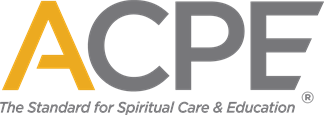Medicare Pass-Through

Medicare Pass-Through Funds for Residency Programs
As a reminder, pass-through funds are only potentially available for programs that qualify a person to be employed in a specialty in which that person could not be employed without this particular educational program. Since it is the industry norm for hospitals to employ only board-certified chaplains (a process that requires 1,600 hours of CPE), then a residency of 1,600 hours (4 units) or a residency of 1,200 hours (3 units) with a pre-requisite unit of 400 hours, that are designed to enable persons to achieve board certification are eligible for reimbursement, provided that they meet the conditions outlined below.
Even though this is a federally funded program, its implementation and oversight is done on a regional basis. In talking with many of centers and with others who are facing similar challenges, what has become clear is that there is a wide variation in interpretation of what is allowable and what is not, and even within a specific region, these interpretations are inconsistently applied to programs.
However, there are particular items that it is safe to say are “must haves” for a center to be eligible to receive pass-through funds for their residency programs. The following basic information is from the Federal Register, and is a good starting point. Click here to view the Federal Register documents: 42 CFR 413.85 – Cost of Approved Nursing and Allied Health Education Activities. This section includes the five basic requirements for a hospital to be considered the operator of an approved program, the hospital MUST:
- directly incur the training costs;
- have direct control of the program curriculum;
- control the administration of the program (includes collection of tuition, payroll, day to day program operation);
- employ the teaching staff;
- provide and control both classroom instruction and clinical training.
Here are some additional areas that we know are concerns of the auditors:
- Review operating agreements with educational institutions to determine how control of the program is discussed and that it matches reality.
- Contractors have cited diplomas listing the provider’s and university’s name as violating the “operator” principle, i.e. the names of the entities are not matching.
- Track funding to ensure provider is incurring all costs (i.e., avoid the community support prohibition).
Here is a partial list of documentation/proof that our centers have shared with us that auditors have asked for as part of the auditing process:
- List of Residents, along with rotation/work schedules, as proof of their work within the institution.
- Certificates of Accreditation from ACPE. If you have a gap in the dates of your certificates due to the meeting schedule of the Accreditation Commission, request a letter from the ACPE office stating that you have been continuously accredited.
- Original graduation certificates for students who completed your program. Face sheets have not been accepted as proof that students completed the program.
- List of employed teaching staff and their job descriptions.
- Administrative records on the collection of tuition and fees that show the entity is collecting them and where they are deposited.
- Administrative records that demonstrate that your hospital incurs the costs of running the CPE program, i.e. Certified Educator salaries, etc.
- Copies of all curriculum/syllabi for each unit as demonstration of the provision of and the direct control of the education. Handbooks, orientation schedules, and other materials that you provide to students are useful for this purpose.
Medicare Pass-Through Resources
- The Quick Overview - walk-through the process of setting things up in advance to maximize outcomes.
- The NAHE Questionnaire - form used by the Auditors (MACS) to gather information from each Program they audit.
- The ASHP Request for CMS - provides background re: ongoing Audits & court cases.
